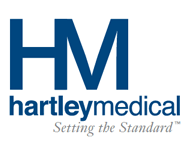There are many pain symptoms associated with the treatment of a cancer patient. The origins of pain range from the location of the neoplasm to the site of treatment. This article shall focus on pain secondary to peripheral neuropathy, radiation dermatitis, and arthritic pain.
 Peripheral neuropathy has clinical manifestations of tingling, or “pins and needles” sensations, that develop in the feet and hands. Pain and weakness can occur in the legs and arms, as well as in the lower back over time. Causative agents attributed with peripheral neuropathies are chemotherapy and anti-viral drugs. Radiation Dermatitis is a condition in which the skin exhibits redness and inflammation resulting from single or multiple exposures to radiotherapy. A study performed showed that 90 percent of women undergoing radiation treatment for breast cancer developed radiation-induced dermatitis.
Peripheral neuropathy has clinical manifestations of tingling, or “pins and needles” sensations, that develop in the feet and hands. Pain and weakness can occur in the legs and arms, as well as in the lower back over time. Causative agents attributed with peripheral neuropathies are chemotherapy and anti-viral drugs. Radiation Dermatitis is a condition in which the skin exhibits redness and inflammation resulting from single or multiple exposures to radiotherapy. A study performed showed that 90 percent of women undergoing radiation treatment for breast cancer developed radiation-induced dermatitis.
Prolonged cancer conditions, and therefore subsequent treatments, can induce pain in joint tissues – specifically in the hands and feet. Patients with these conditions suffer chronic and debilitating pain symptoms requiring progressive treatment(s).
A healthcare practitioner has a significant drug armamentarium to select from when treating various pain conditions. However, often overlooked is the topical approach for the administration of pharmaceuticals. The following agents should be considered, alone or in combination, for topical administration when treating pain conditions.
- Ketamine is an analgesic with sedative properties. This drug is commonly used in surgery for anesthesia. Ketamine can relieve pain locally, as well as hand and foot joint pain.
- Gabapentin, originally developed for the treatment of seizures, is highly effective for relieving pain. This drug affects the nerves by decreasing transmissions of pain signals to the brain. Gabapentin is currently administered orally for the treatment of chronic pain. However over the last 5 years, topical Gabapentin has shown promise for patients as it becomes well absorbed into the dermis to provide extended pain relief.
- Ketoprofen is an analgesic and anti-inflammatory drug, similar to ibuprofen, which is available over the counter. The anti-inflammatory action of ketoprofen is a remarkable feature. It has the ability to reduce inflammation; which in turn reduces certain pain. Ketoprofen is extremely effective in alleviating joint pain.
- Lidocaine and Tetracaine are classified as anesthetic drugs. Doctors and dentists commonly use Lidocaine or Tetracaine to “numb” an area prior to performing a procedure. Lidocaine is currently available with a prescription in a topical patch formulation. These two drugs, similar to Gabapentin, reduce the sensation of pain nerve fibers. Lidocaine and Tetracaine possess good topical absorption and stay localized into the skin for 1 – 3 hours.
- Amitriptyline is a drug originally developed for the treatment of depression. This drug affects the reuptake of neurochemicals within the brain, as well as trims down pain nerve conduction – comparable to Gabapentin and Lidocaine.
Compounded formulations of these medicines vary based on the patient’s conditions. A physician should consider topical preparations to contain concentrations ranging from one to ten percent, with the exception of Lidocaine and Amitriptyline. Due to variances of proper dosing and total surface areas covered of such extemporaneous compounds, limiting the milligrams of these two agents is prudent.
Side effects of the mentioned drugs are usually minimal when administered topically in the appropriate dose. Ketamine can produce light-headedness or drowsiness. Topical irritation or allergic response can occur secondary to the chemical itself. In some cases, patients may experience cosmetic objections due the compounded ointment base. In most cases, side effects are limited, of short duration, and rarely cause cessation of therapy.
The vehicles for topical administration are gel, ointment, and spray. The pluronic gel is the most common vehicle for drug application. Pluronic gels are suitable for water soluble chemicals and deliver the drug effectively into the skin. Some drugs require an ointment base due to chemical nature.
In summary I have observed pharmaceuticals administered topically to be effective and safe. Each patient and prescription should be developed based upon defined clinical assessments and goals. Patients require strict monitoring and possible serum laboratory levels obtained to ascertain drug systemic absorption. The pharmacological actions of the discussed drugs offer therapeutic alternatives to cancer patients suffering form radiation dermatitis, peripheral neuropathy, and joint pain.
Contact Hartley Medical to obtain more information as to how we can provide you with non-sterile topical preparations. Or visit Hartley Medical’s Knowledge Center by clicking here.


Leave A Comment